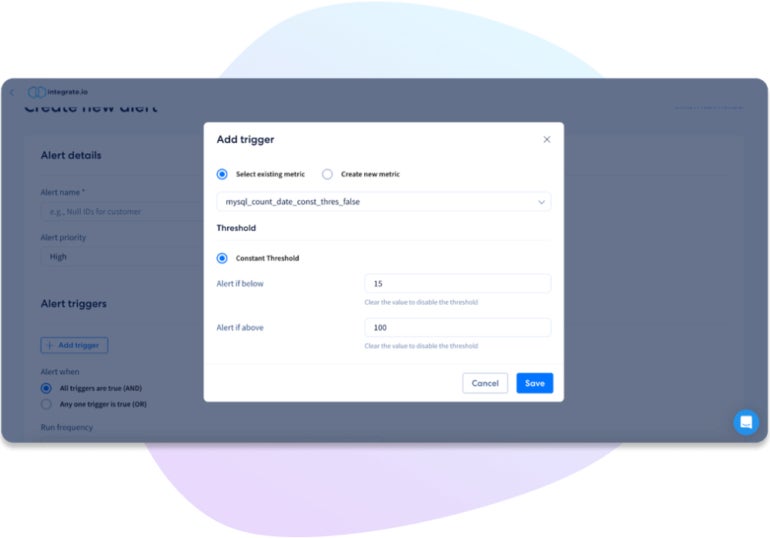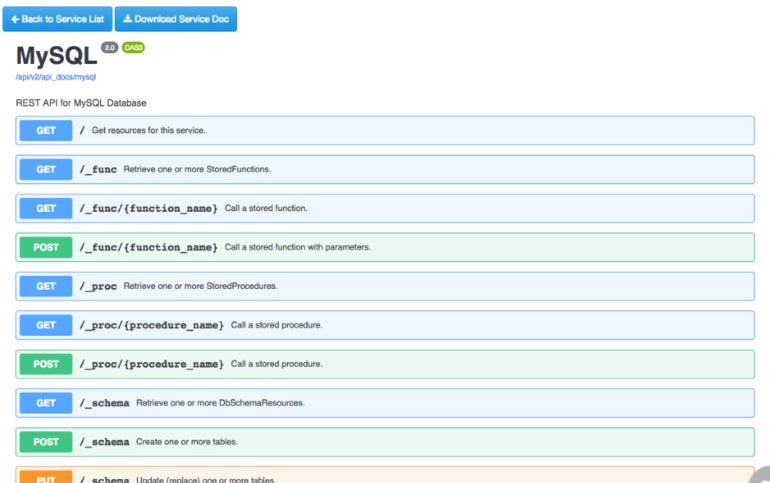Integrate.io fast factsStarting price: Starts at $199 per month. Key features
Take advantage of Integrate.io’s 14-day free trial for one of its modules.
|
Integrate.io is a cloud-based integration platform as a service. It offers extract, transform and load and data pipeline solutions, primarily focusing on e-commerce customer data and extensive automation features. While Integrate.io is touted as a low-code platform, you can still use comprehensive code as needed for expression languages, advanced application programming interfaces and webhooks.
The importance of data will only continue to grow in 2024 as companies seek better and more effective ways to harness information. Solutions like Integrate.io or any of its alternatives that offer data warehouse integration combined with ETL techniques will help achieve better data analytics, which in turn helps achieve business objectives.
Featured Partners: Business Intelligence Software
Integrate.io pricing
Integrate.io pricing is product-dependent and based on the number of connectors used. You can expect to pay a flat fee per year based on how many connectors you need, and if you choose to add more connectors, you will pay an additional $2,000 per year. A 14-day free trial is also available for several Integrate.io modules.
ETL & Reverse ETL
This plan has three sub-plans, allowing you to select the pricing option based on how frequently your business runs pipelines. It’s plans are broken down like so:
- Starter: At $15,000 per year, notable features include daily max scheduling, support for one scheduling cluster and two connectors. It also allows for unlimited packages, transfers and users.
- Professional: At $25,000 per year, it enables you to schedule runs hourly. It supports on-premises connectors and offers up to 60 days of tailored onboarding.
- Enterprise: This plan offers advanced security, support and features, and unlike the starter and professional plans, it allows you to run pipelines in real-time. Contact the company for pricing information.
ETL & CDC
For this product category, Integrate.io charges you based on the number of rows you need. It starts from 5 million rows. To make it easy to understand, we outline each pricing threshold in the table below.
| Parameters (million) | Monthly cost | Annual cost (per month) |
|---|---|---|
| 5 | $199 | $159 |
| 15 | $430 | $340 |
| 40 | $788 | $630 |
| 75 | $1,256 | $1,005 |
| 150 | $2,154 | $1,723 |
| 300 | $3,417 | $2,729 |
| 600 | $4,667 | $3,733 |
| > 600 | Custom quote | Custom quote |
API Generation
Integrate.io doesn’t publish its API generation pricing. You must contact their sales team to request custom quotes for your needs.
Data Observability
Integrate.io’s data observability is a freemium product that offers you up to three alerts at no cost, and each alert gives you unlimited notifications.
Integrate.io features
The Integrate.io platform offers a variety of modules and features to support data integration, data warehouse management and ETL projects.
ETL & Reverse ETL
Integrate.io offers features to help users with both ETL and reverse ETL processes (Figure A). With Integrate.io, you can specifically build and transform data pipelines with ETL connectors for Snowflake, Salesforce, NetSuite, REST API and Redshift. The platform offers over 220 low-code transformation options, allowing you to customize and manipulate your data as needed.

SEE: Explore the differences between data integration and ETL.
Another interesting thing to note is that Integrate.io allows you to schedule your package to run at any desired frequency, starting from 5 minutes (Enterprise plan only) to whatever time interval you require. This allows you to control when and how often your ETL or reverse ETL processes are executed — and you can run up to three packages concurrently.
ELT & CDC
In Integrate.io’s ELT and CDC solution, over 100 data connectors are available to automate data pipeline management (Figure B). It has prebuilt connectors that can extract data from various sources and unify it in a centralized location.

Integrate.io automates mapping the data schema, ensuring that updates to columns, tables and rows are clean and accurate. The platform also allows for customization, enabling you to choose specific tables and fields to be replicated as well as define how source deletes are handled in the destination database.
Data Observability
This free feature is the latest component on the Integrate.io platform. Data Observability includes fully automated monitoring with customizable notifications, real-time alerts, historical alert resolution tracking and detailed end-to-end reporting (Figure C). The solution comes with a variety of alert types and hones in on correcting data errors and increasing data credibility at the data-owner level.

API Generation
The API Generation tool — which stemmed from DreamFactory — connects to data sources without APIs (Figure D). This unique feature makes Integrate.io stand out from its competitors. In addition, Integrate.io includes a well-known and comprehensive REST API solution.

Integrate.io pros
- Simple, straightforward and easy-to-use UI.
- Comprehensive data security and compliance.
- A multitude of data sources and destinations.
- Responsive and helpful customer support.
Integrate.io cons
- The error logs from jobs are sometimes difficult to read and troubleshoot.
- Limited documentation for advanced capabilities.
Integrate.io alternatives
Though Integrate.io is a robust data integration platform, there may be better options for some users and organizations. Should it not meet your needs, we analyzed its top competitors to help you discover the best data integration tools for your business.
| Software | Integrate.io | Fivetran | Hevo Data | Zapier |
|---|---|---|---|---|
| Best for | API generation | Automated data movement | Data analytics | Affordability and integration |
| Connectors | 150+ | 400+ | 150+ | 6,800+ |
| No-code editor | Yes | Yes | Yes | Yes |
| Free plan | No, but some modules are free | Yes | Yes | Yes |
| Paid plan free trial | 14 days | 14 days | 14 days | 14 days |
| Starting price (billed monthly) | $199 | Pay for monthly active rows (MAR) | $299 | $29.99 |

Fivetran: Best for automated data movement
Fivetran is an ETL data management tool that offers bulk and batch data movement, data centralization and replication, and quick and easy connector deployment. Fivetran’s strong emphasis on automated data movement makes it a preferred choice for organizations looking for an efficient way to move their data between different sources and destinations.
Compared to Integrate.io’s 150+ connectors, Fivetran boasts 400+ connectors, covering many data sources such as databases, cloud applications, marketing platforms and more.
SEE: For more information, explore our full Fivetran review.

Hevo Data: Best for data analytics
Hevo is an end-to-end data pipeline platform with a focus on data warehouse centralization, analytics transformations, and business and operational intelligence.
Its data transformation capability gives it an edge over Integrate.io. You can drag and drop prefabricated transformation blocks in the dashboard or write Python scripts to launch data transformations and enrichments. This flexibility allows you to customize and adapt your data transformations per your requirements.
SEE: For more information, check out our complete Hevo Data review.

Zapier: Best for affordability and integrations
Zapier is a no-code automation platform that works across thousands of applications. It focuses more on automation and integration than comprehensive data management and analysis. As such, Zapier is application-oriented and relies on workflows.
If you need a cheaper alternative to Integrate.io and want a wide range of integrations, Zapier is a great option.
SEE: See how Zapier compares to our list of top proposal management software.
Review methodology
To write this Integrate.io review, we collected and analyzed data from various sources, including website information, customer reviews and personal experiences. We evaluated the platform based on its features, user interface, pricing, customer support and overall user experience. We also assessed some of its competitors to determine its top alternatives and provide a comprehensive comparison.
SEE: If you’re still not sure Integrate.io is right for you, check out some of these other top ETL tools.




